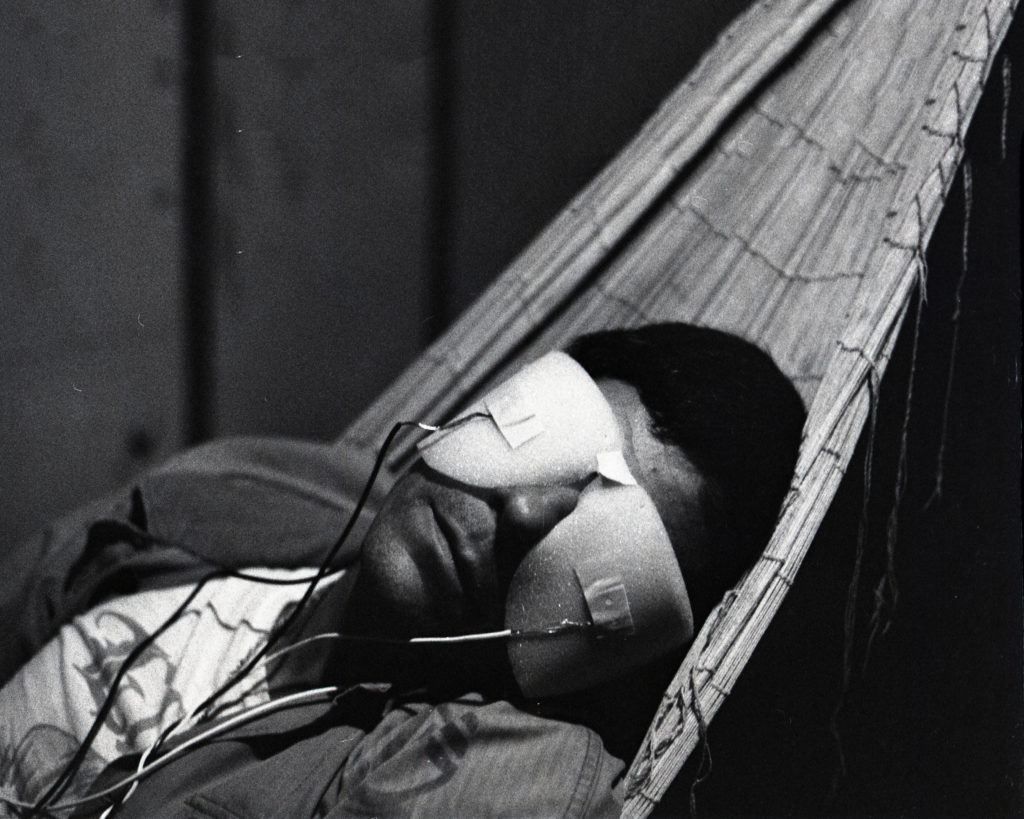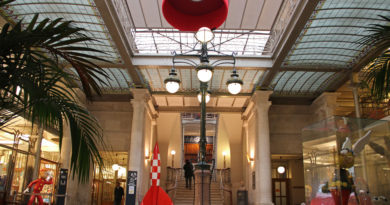Chris Marker – Memories of the Future: the cinema avant-garde enigma
The author, film director, multimedia artist and musician Chris Marker was one of the most prolific artists of his generation and became the father of French Experimental film-making with his best-known film “La Jetee” (The Pier). Memories of the Future is an exhibition in Bozar that comprises over 500 books, documents and works from his personal archives — films, photos, unpublished collages, books, favourite objects and multidisciplinary work which demonstrate what a versatile artist he was, while highlighting the historical events of the time.
Chris Marker explored a variety of different artistic disciplines and social worlds in his tireless quest for the stories and images that impact on our visual culture and more broadly, on our understanding of important political events. Between the date of his birth on 29 July 1921 and that of his death in Paris on 29 July 2012, he kept sharing his critical vision in projects that matter and was surprisingly innovative by integrating the upcoming means of technology.
Some sources claim that he was born in Mongolia. Other sources say he was born in Belleville, Paris, and others, in Neuilly-sur-Seine. What we know for sure, is that he was a philosophy student in Paris. Then he took part in the French Resistance and during the war he travelled to America and worked as a translator and paratrooper for the United States Air Force. After the war, he began a career as a journalist, first writing for the Marxist journal Esprit where he met the film critic André Bazin. Since then, he broadly explored visual arts combining them with writing. In 1953, he co-directed the astonishing film Les statues meurent aussi (”Statues also die”), where he violently criticised the colonialism in Africa. The film was banned for 11 years, where Marker claims: “When men are dead, they enter History, when statues die, they return to Art. This botany of death is what we call culture.”

Meanwhile, he was an editor of the series Petite Planète (“Small World”), which revolutionised the travel guide by using commentaries and poetic description texts of countries in transition. In the documentary Le Joli mai (1962), he films a chronicle of Paris in the period after the Algerian war of Independence. The same year, he finishes the legendary film “La jetee” (The Pier), almost exclusively composed of photographs, in the manner of a photo-novel. An interesting fact is that Jacques Ledoux – the founder of the Royal Cinematheque of Belgium, participated as one of the torturers in the film. The two were good friends and there is a legend that Ledoux challenged Marker to make a film which is composed only of still shots. Many filmmakers were tempted to do a remake of La Jetee, Terry Gilliam’s 12 Monkeys (1995) is undoubtedly one of the most famous.
In the following years, he also befriended several twentieth-century important artists such as Jean Cocteau, André Malraux, Alain Resnais, Agnès Varda, Jean-Luc Godard, Simone Signoret, Yves Montand, Roberto Matta, Andreï Tarkovski, Aki Kurosawa.

But was he part of any particular movement?
He is often associated with the French Nouvelle Vague directors, but in fact, he didn’t belong to any movement. For example, he was tightly linked with the Communist ideology but he never had a party membership card. His eager political criticism led to the creation of ISKRA (“spark”) – a group of directors who produced militant cinema.
’’We don’t know much about him, that is why we guess a lot about him. He operated under so many different pseudonyms. He changed his name from Christian Bouche-Villeneuve when he started writing and shooting the first films. He also refused to make public appearances,” says Adi Chesson, an exhibition tour guide.
He was so fond of cats that, at some point in his life, he started using his cat’s name and photos for his papers and cards. When a media asked him for his image, he used to send a photo of his cat Guillaume-en-Egypte (because she was found in Egypt).
’’He had a very secretive nature, his life was very private. He was married to a woman for a period of time but all we have from her is a photo which we exhibit,” continues Mr.Chesson.
Memories of the Future includes screenings of the films Les statues meurent aussi, La Jetée, Le fond del’air est rouge. Projects on major political movements during his lifetime added a political dimension to his work after May 1968: the war and the Resistance, Cuba, Vietnam, May 68, Prague, Chile, Berlin, Sarajevo, which Marker witnessed first hand. It also highlights the means of expression which he tirelessly explored and incorporated in his art, including film, as well as writing, music, graphic design, photography, the visual arts, video, and digital technology.
The exhibition in Belgium is not chronological, it is organised thematically. In Paris, the same exhibition was linear ’’but probably it’s more interesting to have this kind of fragmented structure because he was a fragmented artist.’’ He kept going back and forth in time. For example, in 2000 he made an installation about the First World War.
Some people call Chris Marker a stranger, ’’the one who used to wear a 3D glasses to make everything otherworldly’’, a mystical man with a camera, a fact mixed with fiction in his journey to find universal answers. In La Jetee, the dreams meet reality, he questions the notions of memory and loss, the nostalgia and the impossible return. Behind his documentaries, he is a rebel, an activist who fights for the rights of people with a genuine curiosity about their views. Memories of the Future shows his imaginative mind, his intellectual and artistic immense skills that will remain to inspire others.



